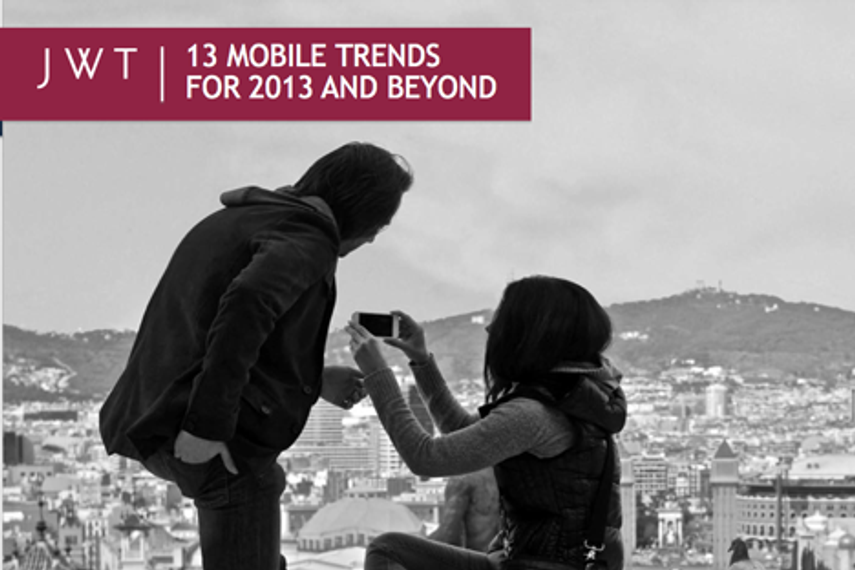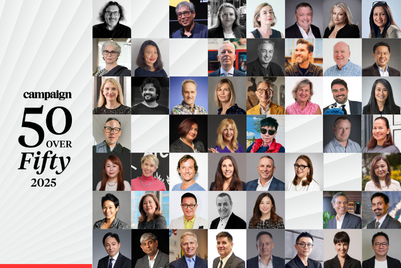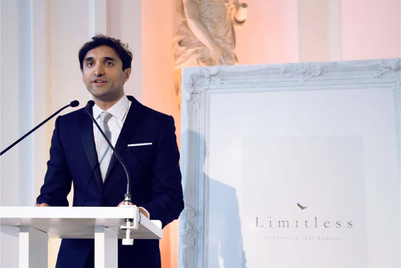
Here are some of top insights from the study and JWT’s analysis of mobile trends and what it all means for marketers:
M2M connection matures
Mobile-to-mobile (M2M) and the apps that support it have become a way of life for most consumers and have started to disrupt sectors and industries from energy to health care to urban planning. This trend is supported by partnerships, such as the non-profit Internet of Things Consortium and the M2M Multi-Operator Alliance (a coalition of companies including NTT Docomo, Etisalat and Telefónica), that are promoting common standards that simplify communication between products and services from different manufacturers.
Qualcomm has released AllJoyn, an open-source software platform that allows any device using AllJoyn to communicate. For instance, a washing machine could send an alert about an unbalanced load to an internet-enabled TV, or a coffee maker could send an alert to a tablet, smartphone or television.
Thanks to such initiatives, worldwide M2M connections are forecast to grow at a compound annual rate of 36 per cent between 2011 and 2021, reaching 2.1 billion, according to a 2012 report by Analysys Mason.
Implications for marketers:
- M2M may mean products taking on personalities. Ericsson’s prototype Facebook-like interface allows users to 'friend' their connected objects, such as lamps, fridges and ovens. Marketers will need to consider the tone and manner their products will adopt.
- Finding new and novel ways to make once-dumb objects intelligent will enable some brands to attract new cohorts.
- M2M will provide new sources of data about consumers, allowing manufacturers to analyse how consumers are using their products. Brands can use this data to better understand their consumers and upgrade their products, pushing software updates to the device or adjusting product-development strategies.
- Some consumers will have a hard time adjusting to the idea of objects that can communicate wirelessly and act autonomously. The challenge will be to design experiences that truly enhance the value delivered to the user.
- While advanced technology is at the core of M2M, ultimately the goal is to make it invisible and the user experience the defining feature. Consumers will look for speedy, seamless experiences from the moment they open their items. Products will have to easily activate out of the box.
The car as a mobile device
Connected cars was a hot topic both at CES and at the Mobile World Congress (MWC) this year, where GM announced it will start embedding 4G LTE connectivity and touchscreens into its vehicles, Ford let attendees test-drive connected cars, and Audi was advertising its A3 Sportback as “the world’s biggest smartphone.”
Cars even have their own social network now. Last year Toyota launched a network that connects customers with their cars, dealerships and Toyota HQ. Owners can 'friend' their vehicle, getting information such as its battery charge and fuel level. The car can also alert owners to issues such as low battery power or tyre misalignment with tweet-like notifications.
According to ABI Research, in 2012 about one in 10 cars shipped globally featured a connectivity system; by 2017 this will be six in 10.
Implications for marketers:
- Consumers are coming to expect constant connection, and the car will be the next means to achieve this. Already 37 per cent of people want to stay as connected as possible in their vehicle, according to a 2012 report from Deloitte.
- We’ll see a lot more collaborations among automakers, tech companies, app developers, network operators and all kinds of brands, working together to add enhancements and functionality for drivers.
- As screens proliferate in cars, the vehicle will become a platform for delivering targeted, tailored value to drivers in multiple ways.
- With cars able to stream video, brands will have opportunities to deliver specialised content for passengers.
- By combining data points like location, time and user profiles, the car will deliver personalised recommendations and time-sensitive promotions. For instance, Ford owners can ask the vehicle to search for nearby products such as ice cream.
- The car will be an e-commerce platform, enabling purchases via the dashboard. Toyota’s Entune, for example, lets drivers make restaurant reservations or buy movie tickets using in-car apps.
- Driver distraction will become a greater concern. Brands will need to be ultra-sensitive to a wide range of safety implications and anticipate regulation.
Understanding Gen Z
If Gen Y is defined as the internet generation, Gen Z are the mobile natives. They have come to expect everything—information, products, entertainment and friends—to be instantly available in the palm of their hand. This mobile-informed outlook makes them more impatient, socially connected and constantly stimulated than any generation before, presenting a new challenge for marketers looking to engage with this cohort.
This is encouraged by the presence of institutions like Tech Camps, where kids develop digital skills early in life. According to JWT, iD Tech Camps, a California company, saw the number of attendees at its summer camps grow 70 per cent between 2011 and 2012. CoderDojo is a free, not-for-profit coding club that has spread to 24 countries. CDI Apps for Good is a UK programme that helps students 11 to 18 create apps that “change their world”. In Sweden, SWE Advertising (a JWT partner agency) created the SWEappcademy, a weeklong camp where kids aged 10 to 12 create mobile apps.
Implications for marketers:
- The next generation has new ideas about how consumers and brands interact. Among other things, they expect brands to be available for quick, seamless communication across platforms, and they expect transparency, which mobile can enable (for example, via NFC tags, QR codes or pieces of augmented-reality content that lead to information on sourcing or nutritional data).
- For many in Gen Z, the mobile device is omnipresent and indispensable, and often the primary device for internet access. Brands that spend time with this group can enjoy a two-way learning experience. For its developer conference last year, Apple extended scholarships to 150 youngsters.
- As Gen Z enters the workplace, it will bring a distinct set of desires and expectations. Companies will have to fully embrace BYOD and mobile culture (as Marissa Mayer has mandated at Yahoo by requiring employees to use smartphones), and allow this entrepreneurial, independent-minded group the freedom to tinker with products and services.
The disappearing smartphone screen
Mobile is gradually growing less synonymous with the smartphone. Google Glass, which integrates a screen, microphone, camera and speaker, is expected to launch later this year, as are the M100 glasses from Vuzix. Already on the market, Oakley’s Airwave goggles, equipped with GPS, Bluetooth, and a heads-up display, target skiers and snowboarders by providing information on the slopes.
In the future, contact lenses with LCD screens and connectivity may display information directly into wearers’ eyes. Researchers at Ghent University in Belgium have developed prototype lenses that could eventually function in this way.
Smart watches are already a way of life for many, with products like G-Shock’s Bluetooth Watch and The Pebble (available for pre-order) allowing users to see who’s calling when the smartphone rings, read emails, scan Twitter or Facebook, and control their music. The Cookoo watch also lets users check in on Facebook or activate the phone’s camera at the touch of a button. Samsung is working on its own smart watch, and Apple and Google are expected to do so as well.
Implications for marketers:
- Consumers themselves will become the mobile device as they adopt more wearable technology and shift from intermittent interactions with a handheld device to a constant state of connectivity.
- Mobile experiences will be less intrusive and more discreet, unless the user chooses otherwise.
- With screens always available, marketers have more opportunities to send short, targeted, geo-local messages.
- As consumers start accessing multiple content streams from different devices and as the visual real estate shrinks, marketers will have to shorten their messaging to catch the fleeting attention of recipients.
- Wearable technology may help drive adoption of mobile wallets; when paying is as easy as swiping a watch over a reader, more consumers may warm to the idea of mobile payments.
- While conventional wisdom once held that viewers would primarily watch short clips on smaller screens, we’ll see mobile consumers embrace the idea of instantly available video wherever they are, on the device they’re most attached to.
Mobile as a genie
Consumers are starting to expect mobile devices to summon whatever they need, where they need it.
More companies are using mobile technology to enable consumers to request products and services at the push of a button and have these delivered to any location. As the mobile device turns into a genie of sorts, 'instant' will be redefined to mean truly immediate.
For example, eBay Now offers an iOS app and a mobile Web version that allows consumers on the go in several cities to receive products from local merchants within hours. Orders are pushed to the courier closest to the vendor in question, and users can track the delivery’s progress and phone the valet directly. Postmates offers a similar service, promising delivery in under an hour, as well as couriers who can make in-store purchases and deliver them. Payments will be expected to be a seamless and almost invisible experience.
Implications for marketers:
- Consumers on the go will increasingly expect to order and receive goods and services with minimal delay—especially the impatient, tech-savvy Millennials. A recent Boston Consulting Group study found that affluent Millennials are particularly attracted by expedited delivery service and are often willing to pay more for it. Brands will need to cater to these demanding consumers by building out their own instant delivery services or partnering with companies like TaskRabbit or Postmates. In a fun example, Durex has trialled an app that allows customers to order condoms for quick and discreet delivery.
- As more consumers gain the ability to have goods come to them quickly and easily, bricks-and-mortar outlets will have to entice shoppers by creating 'third spaces' or otherwise providing compelling reasons to visit a physical store.
Brands blend in
Increasingly, we’ll see a move away from asking how brands can advertise on this platform toward a focus on how brands can blend into the mobile lifestyle. The challenge will be to sync with the user’s frame of mind or intent, potentially predicting just what consumers might need, want or be open to at a given moment.
This will mean sending contextually relevant messaging to those who opt in or providing enough utility or value to become integrated into the mobile routine. More sophisticated data analysis and technology will help brands accomplish this; companies will take into account such details as whether a user is lying down or walking, for instance.
For example, Navigation app Waze, which claims roughly 40 million users globally, is working with brands including Dunkin’ Donuts, Taco Bell and Ramada. Drivers doing a search for coffee, for instance, will see Dunkin’ Donuts as a sponsored option. Branded pins appear for locations along the driver’s route, with users given the option to reroute. When the car is not moving, a screen 'takeover' may push a relevant offer, with the option to reroute; users can also save offers in an inbox. Offers are tailored around contextual factors like time and origin/destination (a coffee offer during the morning drive to work), as well as weather.
Waze is working on a 'temporal interest graph' that shows city-specific patterns. For example, trips to fast-food outlets may peak at different times. Offers are also tailored to the route (if the endpoint is a Walmart or an airport). The company is working toward segmenting users based on behaviour: for instance, classifying users who routinely drive to airports and open the app in different cities as frequent business travellers.
“We’re building a picture of how people move through the world and what their patterns are,” said Di-Ann Eisnor, VP of platform and partnerships, in JWT’s report.
Implications for marketers:
- While most mobile phone advertising will be permission-based, fine-tuned messaging will likely win brands significant opt-in. But brands have only one chance to get it right; consumers will have zero tolerance for mobile experiences that aggravate or frustrate.
- As technology evolves, we’ll see more 'predictive personalisation', which will help to drive consumer opt-in. Coca-Cola, for instance, is in the early stages of testing how mobile can be used to anticipate needs, such as the inclusion of a sensor that detects when people need rehydration.
- More than any other platform, most mobile-phone advertising will revolve around some kind of value exchange, from the blatant (watching an ad in exchange for free mobile minutes) to the more nuanced (most users of Waze will understand that the branded pins on their map help to enable the free service).
- Everything brands do on mobile will need to take into account the 3 P’s: privacy, permission and preference.


.jpg&h=334&w=500&q=100&v=20250320&c=1)
.jpg&h=334&w=500&q=100&v=20250320&c=1)

.jpg&h=334&w=500&q=100&v=20250320&c=1)


.jpg&h=334&w=500&q=100&v=20250320&c=1)
.jpg&h=334&w=500&q=100&v=20250320&c=1)




.jpg&h=268&w=401&q=100&v=20250320&c=1)



.jpg&h=268&w=401&q=100&v=20250320&c=1)
.jpg&h=268&w=401&q=100&v=20250320&c=1)
